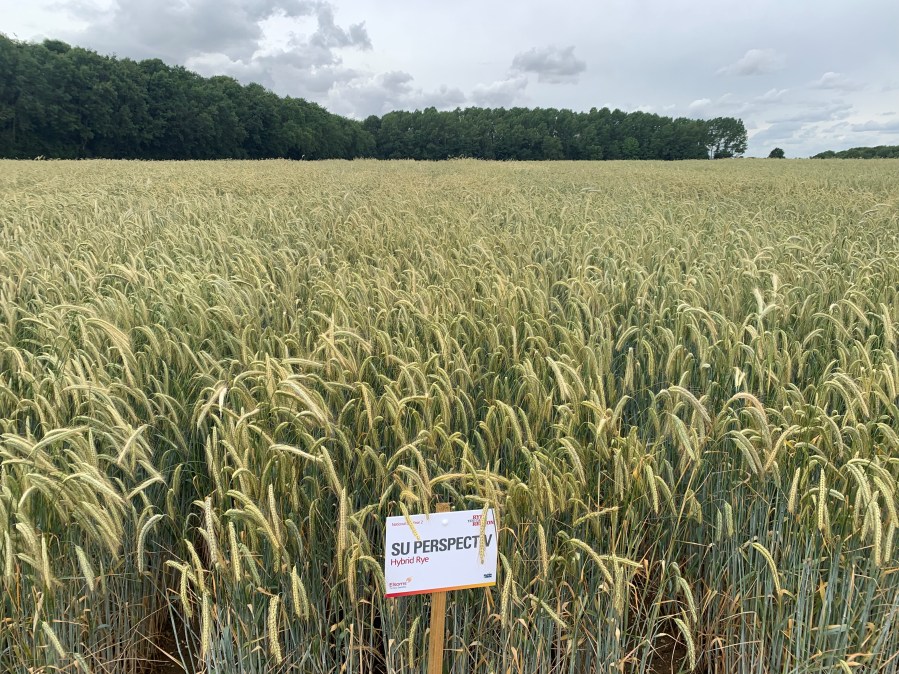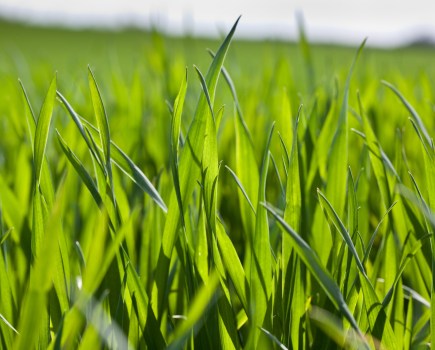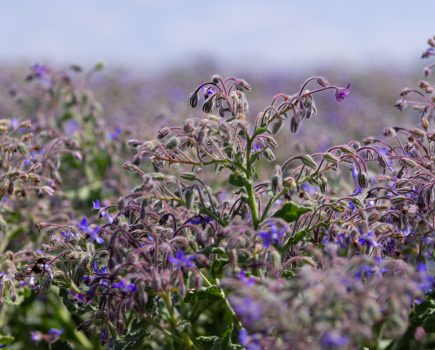Hybrid rye has the potential to garner further interest as growers look to diversify rotations, is the message from agronomists and plant breeders.
Furthermore, with uncertainty regarding maize seed treatments, a renewed focus on hybrid rye could lift its current UK planted area beyond 50,000ha, confirms Agrovista’s arable seed product manager and agronomist, Ted Williams.
“The potential loss of the bird deterrent maize seed treatment Korit (ziram) would hit maize growers hard and make the crop difficult to grow successfully. So while we hope new alternatives gain approval over time, this could be a shot in the arm for hybrid rye giving it the momentum to become an even more important crop in future rotations,” explains Ted.
He says hybrid rye is flexible – can be drilled early or late, on any soil type – helping to spread the harvest. “Its agronomic benefits include lower seed rates, rapid spring growth, exceptional water efficiency and an aggressive root system that can scavenge for moisture and nutrients,” continues Ted.
“It also offers superb nitrogen use efficiency (NUE), requiring up to half the fertiliser of a second wheat and has far less susceptibility to take-all, making it an attractive option as a second cereal.”
Sustainability credentials
According to Ted, hybrid rye ticks all of the sustainability boxes and is relatively straightforward to manage when compared with other cereal crops – in challenging climatic conditions such as the recent hot, dry summers, it adapts well and generally copes better than wheat or barley.
“However, it’s not completely bullet-proof, and with low seed rates and a wide autumn drilling window it can be susceptible to slug activity, so growers should be cautious, particularly with late drilling and in wetter autumns. That aside, the financial return on a 10-12t/ha hybrid rye crop makes a compelling argument for growers,” says Ted.
Agrovista works with both German breeder Saaten Union and their UK partner Elsoms Seeds when it comes to the crop. Established varieties such as SU Performer and SU Baresi can regularly achieve wholecrop fresh weight yields of up to 50t/ha on good land and with around 50% of the varieties on the current Descriptive List (DL), the Saaten Union pipeline seems well suited to UK growing conditions, adds Ted.
Supporting this positive outlook on hybrid rye is Danny Richardson, combinable seed product specialist at Wynnstay.
“Wynnstay has already seen a 10-15% increase in farmer customers growing hybrid rye in the past two years. However, the key to unlocking more growing area in the short-medium term is establishing new markets,” comments Danny.
“With a large livestock and mixed farm customer base, we see future interest in hybrid rye coming from mixed farms, specifically those that grow feed crops for their own livestock.
“A switch to rye-based diets within the pig sector is already happening – trial results suggest there’s little difference in liveweight gains between rye and wheat-based diets, with improved gut health and reduced levels of aggression favouring rye over wheat.”
Bio-ethanol production
He says another potential market could be bio-ethanol production. “Although wheat is still the primary source for this, rye could do the job equally well, if not better, given its lower inputs versus wheat.
“Of the hybrid rye varieties, we’ve seen customer demand for both SU Performer and SU Arvid with many of our rye growers splitting their area between these established varieties and newer ones coming onto the Descriptive List.
“With wider market opportunities for hybrid rye, combined with possible future yield penalties for maize crops, I can certainly see the area of hybrid rye rising above 100,000ha in a relatively short time frame,” he says.
Stephen Goward, general manager of Saaten Union UK, sees rapidly rising input costs, future emphasis on sustainable farming practices and recent extreme weather events in the UK as multiple reasons for more growers including hybrid rye in rotations.
“We see tremendous opportunities for market growth in winter hybrid rye. Grain yields of 10-13t/ha are readily achievable with a crop that’s relatively easy to manage and can be grown on all soil types. Many growers have already discovered it out-performs both wheat and barley as a second or third cereal, and with a wide drilling window from September-early November, it’s flexible within the rotation.”
Promising varieties
Stephen says of Saaten Union varieties on the DL, SU Baresi sits well at a yield of 103%. “It’s dual purpose – grain or biomass, relatively early to mature and stiff strawed so should appeal to growers across the UK.
“SU Perspectiv, with a 102% yield on the DL, is also a dual purpose variety and excels in the North. In trials in North Yorkshire and Scotland it recorded high yields of 108% and this should heighten its appeal to growers in these important regions,” adds Stephen.
“New to the UK for 2024 we have SU Karlsson. It’s an out-and-out biogas variety, outperforming other SU and competitor varieties on gas yields by 4.5% in our trials. With strong spring vigour plus a robust disease package including a 7 for brown rust, I believe it’ll gain good traction in the market this year.”
Stephen reminds that for growers looking for a good agronomic insurance policy, all SU varieties are blended with a 10% population rye pollinator, SU Bebop. “The use of a pollinator variety continues to be a very successful way of reducing ergot infection in SU varieties,” he concludes.




